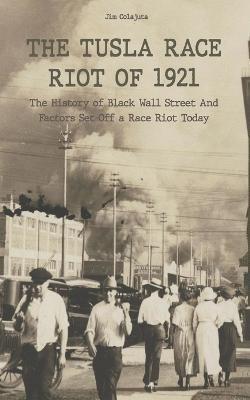The Tusla Race Riot of 1921 The History of Black Wall Street And Factors Set Off a Race Riot Today

The Tusla Race Riot of 1921 The History of Black Wall Street And Factors Set Off a Race Riot Today
Black Wall Street was an upscale black neighborhood in Greenwood, Oklahoma, that stood up to the country's discriminatory institutions. A massacre in 1921 utterly destroyed the community. History is depicted with a specific and deliberate narrative, and how it is reported can vary over time. In the instance of Greenwood, most reporting on the massacre misrepresented both the reason for the violence and the events of the massacre, failing to mention that the violence was carried out by a white mob that overcame and ruthlessly destroyed the citizens and community of Greenwood. Even decades later, the catastrophe claimed hundreds of lives, caused millions of dollars in property damage, and resulted in the enormous forced resettlement of families that remained relatively unknown to the American public. The Greenwood District was beginning to be restored by the 1940s. Still, it never regained its importance due to integration during the Civil Rights Era. Many multi-ethnic coalitions fought for civil rights and liberties during the Civil Rights Era. This campaign impacted Japanese-Americans, who led the charge for reparations to victims of Japanese internment camps during WWII. Such a movement resulted in the Civil Liberties Act of 1988, which provided compensation and a public apology to victims of internment camps delivered by President Reagan. The destiny of Black Wall Street is contrasted with the fate of Japanese-Americans, demonstrating that white supremacy does not deny reparations to non-white groups but rather has complete control over which people will receive justice and when, if ever. This book will look at the Back Wall Street Massacre in Tulsa, Oklahoma, in 1921 as one of many examples of how white supremacy prevents non-white groups from gaining power, whether it is social, monetary, cultural, or political power.
PRP: 82.58 Lei
Acesta este Pretul Recomandat de Producator. Pretul de vanzare al produsului este afisat mai jos.
74.32Lei
74.32Lei
82.58 LeiLivrare in 2-4 saptamani
Descrierea produsului
Black Wall Street was an upscale black neighborhood in Greenwood, Oklahoma, that stood up to the country's discriminatory institutions. A massacre in 1921 utterly destroyed the community. History is depicted with a specific and deliberate narrative, and how it is reported can vary over time. In the instance of Greenwood, most reporting on the massacre misrepresented both the reason for the violence and the events of the massacre, failing to mention that the violence was carried out by a white mob that overcame and ruthlessly destroyed the citizens and community of Greenwood. Even decades later, the catastrophe claimed hundreds of lives, caused millions of dollars in property damage, and resulted in the enormous forced resettlement of families that remained relatively unknown to the American public. The Greenwood District was beginning to be restored by the 1940s. Still, it never regained its importance due to integration during the Civil Rights Era. Many multi-ethnic coalitions fought for civil rights and liberties during the Civil Rights Era. This campaign impacted Japanese-Americans, who led the charge for reparations to victims of Japanese internment camps during WWII. Such a movement resulted in the Civil Liberties Act of 1988, which provided compensation and a public apology to victims of internment camps delivered by President Reagan. The destiny of Black Wall Street is contrasted with the fate of Japanese-Americans, demonstrating that white supremacy does not deny reparations to non-white groups but rather has complete control over which people will receive justice and when, if ever. This book will look at the Back Wall Street Massacre in Tulsa, Oklahoma, in 1921 as one of many examples of how white supremacy prevents non-white groups from gaining power, whether it is social, monetary, cultural, or political power.
Detaliile produsului








